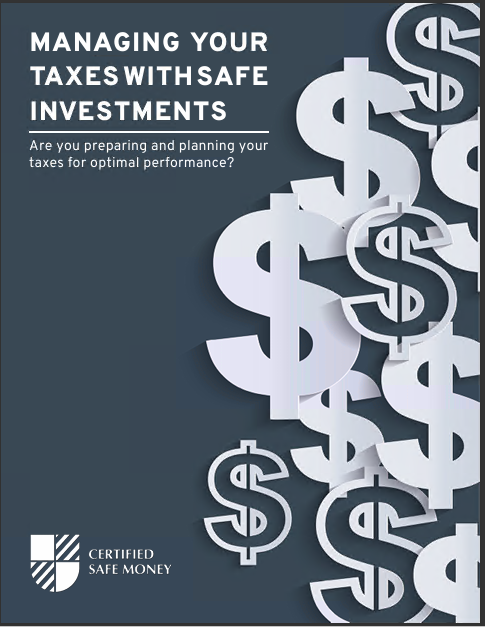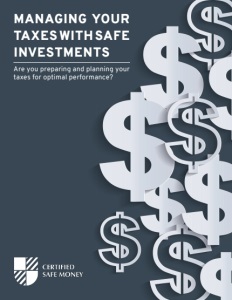Key Takeaways
- In 2024, understanding the updated tax implications of annuities can help retirees optimize their income and avoid unexpected tax liabilities.
- Different types of annuities are subject to various tax rules; being informed about these changes is crucial for effective retirement planning.
Annuities and Taxes: What You Need to Know to Avoid Surprises Later
As retirees or those nearing retirement, securing a steady income stream is a top priority. Annuities are a popular choice for achieving this goal, but without a clear understanding of how they are taxed, you could face unpleasant financial surprises. Recent changes in 2024 tax laws make it more important than ever to stay informed and plan accordingly.
Exploring the Types of Annuities and Their Tax Impacts
Annuities come in various forms, each with unique tax implications. The most common types include fixed, variable, and indexed annuities. Understanding how each is taxed is essential for avoiding surprises.
Fixed Annuities: Predictable Income with Deferred Taxes
Fixed annuities guarantee a specific payout, which many retirees find appealing for its stability. The earnings on fixed annuities are tax-deferred, meaning you don’t pay taxes on the growth until you start receiving payments. Upon withdrawal, the earnings are taxed as ordinary income, while the portion that represents the return of your principal investment is not taxed.
The tax deferral feature is beneficial, especially if you anticipate being in a lower tax bracket during retirement. However, early withdrawals (before age 59½) are subject to a 10% penalty, in addition to regular income taxes.
Variable Annuities: Potential Growth with Tax Considerations
Variable annuities offer the potential for higher returns by allowing investments in a portfolio of securities, but this also introduces greater risk. Like fixed annuities, the earnings are tax-deferred, and taxes are only due upon withdrawal.
The complexity arises when the investment performs well, as the resulting gains can push you into a higher tax bracket, leading to increased tax liabilities. Early withdrawals are similarly penalized with a 10% tax if taken before the age of 59½.
Indexed Annuities: Market-Linked Returns with Tax Deferral
Indexed annuities combine features of both fixed and variable annuities, offering returns based on a market index, like the S&P 500, while providing some protection against market downturns. The tax treatment mirrors that of fixed and variable annuities—earnings grow tax-deferred and are taxed as ordinary income upon withdrawal.
Given that the returns are tied to market performance, there’s potential for higher gains, which also means potentially higher tax liabilities when the funds are accessed.
Qualified vs. Non-Qualified Annuities: Key Tax Differences
Annuities can be classified as either qualified or non-qualified, depending on the source of the funds used to purchase them. This classification significantly affects their tax treatment.
Qualified Annuities: Tax-Deferred Growth in Retirement Accounts
Qualified annuities are funded with pre-tax dollars, usually through retirement accounts like IRAs or 401(k)s. Because contributions are made with pre-tax dollars, the entire amount—both principal and earnings—is taxed as ordinary income when withdrawn.
The advantage here is the potential for significant tax-deferred growth. However, mandatory withdrawals, known as required minimum distributions (RMDs), begin at age 73, which could lead to a higher tax burden, especially if your other retirement income sources are substantial.
Non-Qualified Annuities: After-Tax Contributions with Favorable Taxation
Non-qualified annuities are purchased with after-tax dollars, meaning the principal has already been taxed. When you start taking distributions, only the earnings portion is taxed as income, while the return of the principal is tax-free.
This can be beneficial in retirement, allowing for a potentially lower tax burden. However, these annuities do not offer the upfront tax deductions that qualified annuities do.
Strategic Withdrawals: Minimizing Tax Impacts
The manner in which you withdraw funds from your annuity can significantly affect your tax liability. Planning your withdrawals strategically can help minimize taxes and maximize your retirement income.
Annuitization: Spreading the Tax Burden
Annuitization is a process where you convert your annuity into a stream of payments over a specified period or for life. Each payment consists of both principal and earnings, and because the payments are spread out, the tax impact is distributed over several years. This can keep you in a lower tax bracket, thereby reducing your overall tax burden.
Lump-Sum Withdrawals: Immediate Access with Potentially High Taxes
Opting for a lump-sum withdrawal provides immediate access to your annuity funds but can result in a significant tax bill. The entire amount of earnings is taxed as ordinary income in the year of withdrawal, potentially pushing you into a higher tax bracket. This option might be useful for covering large expenses, but it’s essential to be aware of the tax implications.
Partial Withdrawals: Flexibility with Tax Efficiency
Partial withdrawals allow you to access a portion of your annuity funds, which can help manage your tax burden. However, it’s important to note that the IRS generally considers earnings to be withdrawn first (the “Last In, First Out” rule), which means the initial withdrawals will be taxed as income.
By carefully timing your partial withdrawals, you can minimize the tax impact and maintain a steady income stream throughout retirement.
Avoiding Penalties: Essential Considerations
In addition to ordinary income taxes, certain penalties can further reduce the amount you receive from your annuity. Understanding these penalties is crucial to avoid unnecessary costs.
Early Withdrawal Penalties: The 10% Rule
If you withdraw funds from your annuity before age 59½, the IRS may impose a 10% penalty on top of regular income taxes. While there are exceptions to this rule (such as for certain medical expenses or disabilities), most early withdrawals will incur this additional cost.
Surrender Charges: Annuity-Specific Penalties
Many annuities include surrender charges, which are fees for withdrawing more than a specified amount within the early years of the contract. These charges typically decrease over time and may disappear altogether after several years, but they can be substantial in the early years.
To avoid or minimize these charges, it’s important to understand the terms of your annuity contract and plan your withdrawals accordingly.
Planning Ahead: Strategies for Minimizing Annuity Taxes
With careful planning, you can reduce the tax impact of your annuities and maximize your retirement income. Here are some strategies to consider:
Utilizing Tax-Advantaged Accounts
Consider holding annuities within tax-advantaged accounts like IRAs or 401(k)s. This can provide additional tax deferral benefits, allowing your investments to grow without being reduced by taxes.
Roth Conversion: A Tax-Free Retirement Strategy
For qualified annuities, a Roth conversion might be a smart move. By converting a traditional IRA or 401(k) into a Roth IRA, you pay taxes on the balance now, but enjoy tax-free withdrawals in retirement. This is especially advantageous if you expect to be in a higher tax bracket later in life.
Coordinating Withdrawals with Other Income Sources
Strategically coordinating your annuity withdrawals with other sources of income, such as Social Security or other retirement accounts, can help you manage your tax bracket and minimize overall tax liabilities.
Staying Informed: The Key to Avoiding Tax Surprises
The tax landscape is always changing, and staying informed is critical to avoiding unpleasant surprises. For instance, in 2024, the tax brackets have been adjusted to account for inflation, which may impact how much of your annuity income is taxed.
Being proactive in understanding the tax implications of your annuities—and seeking professional advice when necessary—can help you enjoy a more secure and financially sound retirement.
Securing Your Retirement Income and Avoiding Tax Pitfalls
Annuities can be a powerful tool in ensuring a stable income during retirement, but it’s essential to understand how they are taxed to avoid surprises. Whether you choose a fixed, variable, or indexed annuity, knowing the tax implications and planning your withdrawals strategically can help you maximize your retirement income and minimize taxes.












